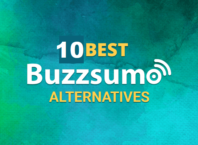In today’s digital age, it matters how you look online. That’s why Reputation Defender is dedicated to helping people take control of their online reputation. As leaders in this field, Reputation Defender provides digital privacy and online reputation management services for individuals and businesses.
Social media is a major part of online reputation management—your profiles on these sites can help or hurt your image significantly. As one of the most popular social networks, LinkedIn can be a powerful tool for anyone wanting to build and maintain a positive online presence.
Contents
What Is Online Reputation Management?
Before diving into LinkedIn-specific strategies, it’s essential to understand what online reputation management is. The concept centers on controlling and influencing how you or your business are perceived online.
Since we live so much of our lives on the internet, people often form their initial impressions based on the information they find online. Whether it’s a potential employer, client, or customer, their perception of you or your business can be significantly influenced by what they see on search engines—including websites, blogs, business listings, news coverage, videos and photos, and of course, social media. Managing your reputation on sites you control helps ensure that people’s first impression of you is accurate and fair.
A strong online reputation is also built on trust and credibility. When you have a positive online presence, it instills confidence in others. Positive reviews, testimonials, and a record of delivering quality work or services enhance trust and credibility, making it easier to attract new opportunities, clients, or partnerships.
Benefits of LinkedIn for Individuals and Businesses
With LinkedIn, you have the opportunity to showcase your professional expertise, establish thought leadership, and build a strong network.
LinkedIn offers unique advantages for both individuals and companies. As an individual, you can highlight your skills, achievements, and professional experience to attract potential employers or clients.
For companies, LinkedIn provides a platform to showcase company culture, attract talent, and engage with your industry. Regardless of your purpose, implementing effective reputation management strategies on LinkedIn can yield significant benefits.
Both individuals and companies can utilize LinkedIn’s analytics to track the performance of your profile or company page. You can use these tools to gain insights into the reach, engagement, and demographics of your audience, and adjust your strategies based on these metrics to maximize your impact.
7 Tips for Using LinkedIn for Reputation Management
Here are seven tips for how you can best use LinkedIn as a tool for online reputation management:
1Humble Brag
While it’s important to be humble, don’t shy away from highlighting your accomplishments. Share success stories, projects you’ve worked on, and accolades you’ve received. However, be mindful of striking the right balance between showcasing your expertise and appearing overly self-promotional.
2Connect, Connect, Connect
LinkedIn is all about building connections. Expand your network by connecting with professionals in your industry, colleagues, mentors, former classmates, and even individuals you admire. Actively seek out meaningful connections and engage with their content by commenting and sharing your own insights. Building a strong network enhances your credibility and opens doors to new opportunities.
3Don’t Forget the Keywords
Optimize your LinkedIn profile by incorporating relevant keywords related to your skills, industry, and areas of expertise. This can help improve your visibility in search results, making it easier for others to find you. Conduct keyword research specific to your profession to ensure you’re using the right terms.
4Utilize Groups
LinkedIn groups provide a valuable platform for networking, knowledge sharing, and establishing yourself as an industry expert. Join groups relevant to your field, actively participate in discussions, and offer valuable insights. Engaging with group members fosters connections and boosts your professional reputation.
5Use the Article Feature
LinkedIn’s article publishing feature allows you to showcase your expertise and share your work with your network. Compose well-written articles addressing industry trends, offering tips, or sharing your experiences. This not only positions you as a thought leader but also generates engagement and expands your reach within the LinkedIn community.
6Post Regularly
Consistency is key on LinkedIn. Develop a posting schedule and stick to it. Share updates, articles, industry news, or thought-provoking questions to keep your network engaged. Regular activity demonstrates your involvement in your field and maintains your visibility.
7Stay Engaged
Engagement is at the heart of reputation management. Respond to comments and messages, engage with others’ posts by liking, commenting, or sharing, and participate in discussions. Active engagement helps build relationships, establish credibility, and foster a positive online reputation.
An Excellent Resource for Online Reputation Management
LinkedIn is a powerful tool for online reputation management. By implementing the tips above, you can use the site to enhance your online reputation. Remember: consistency, authenticity, and engagement are the pillars of successful reputation management on LinkedIn. Embrace this professional networking platform, and it can help bolster your personal or company brand in the digital space.












